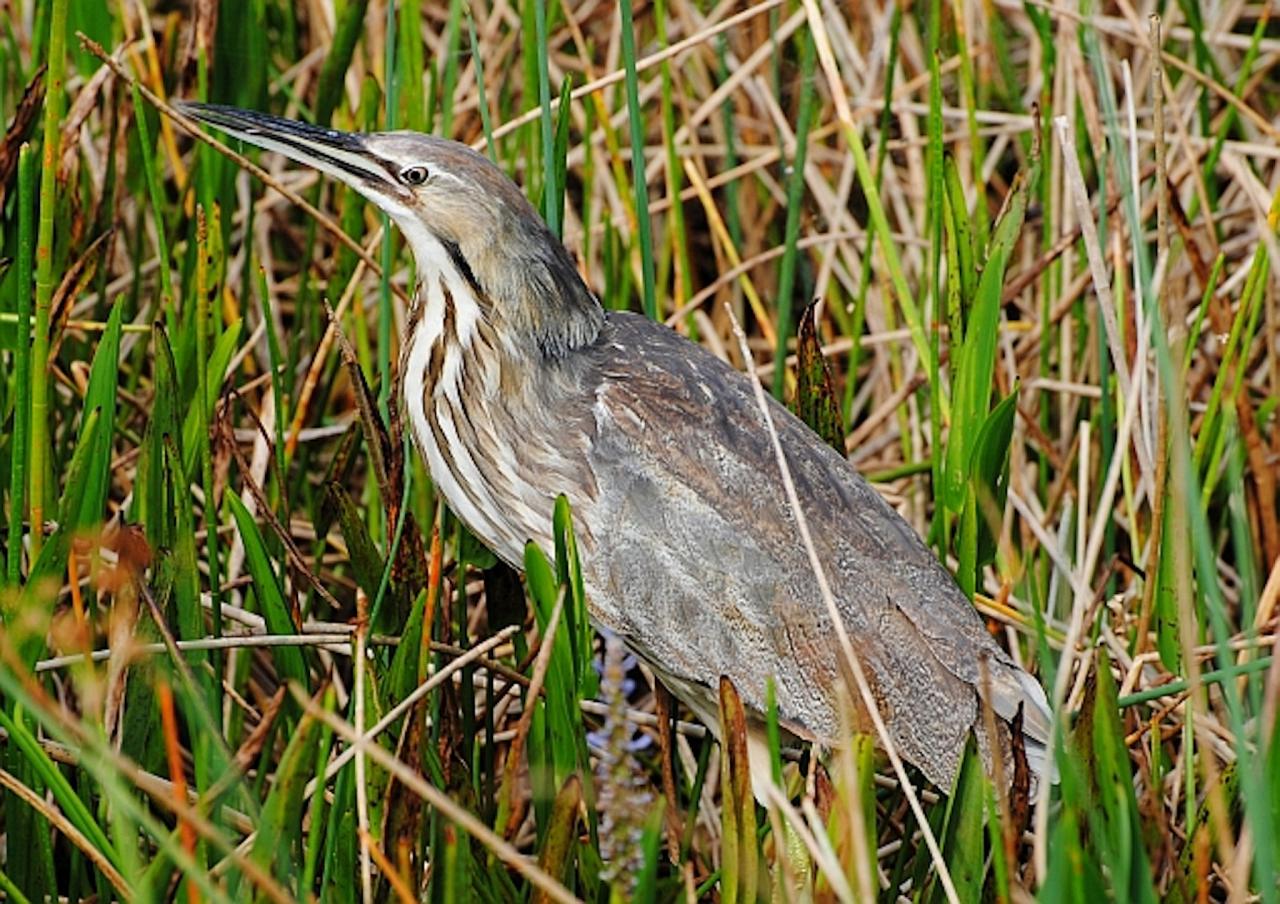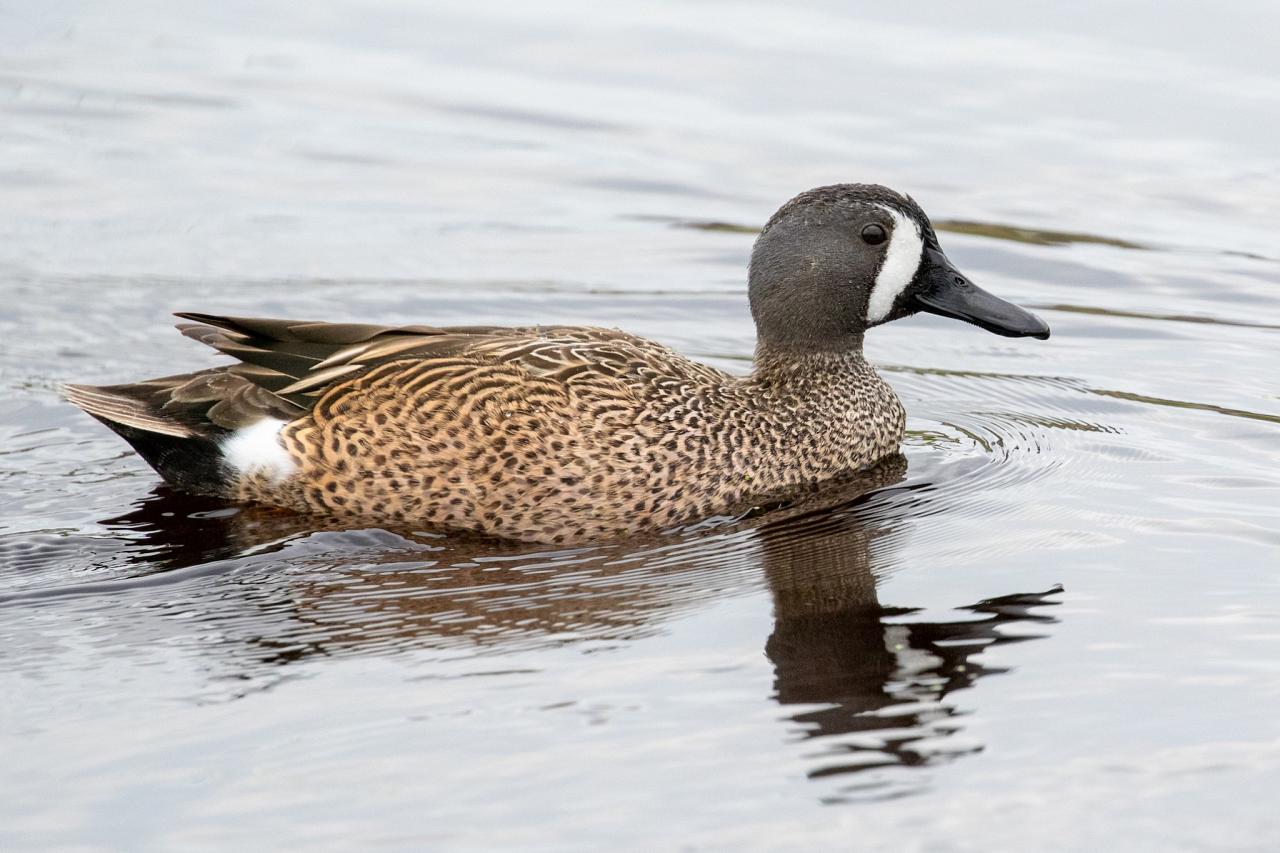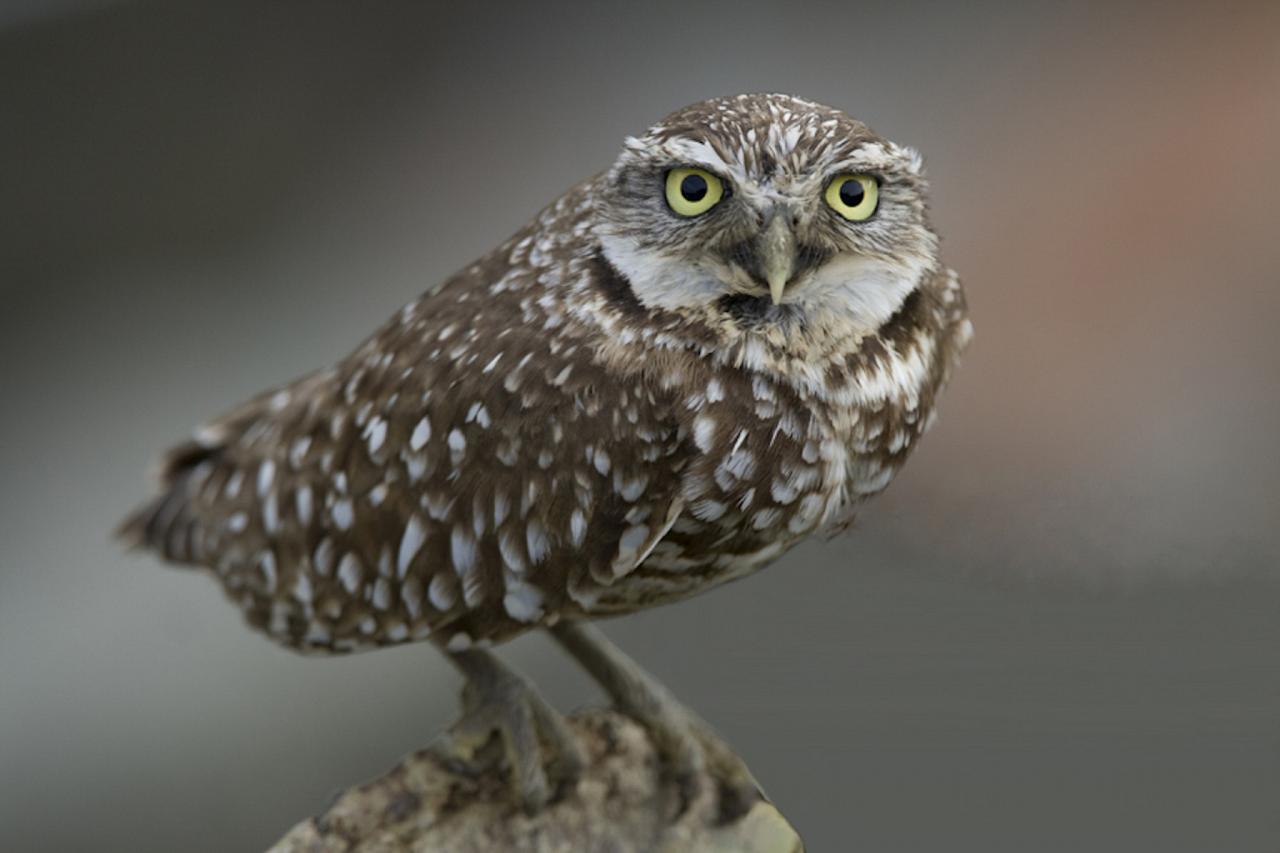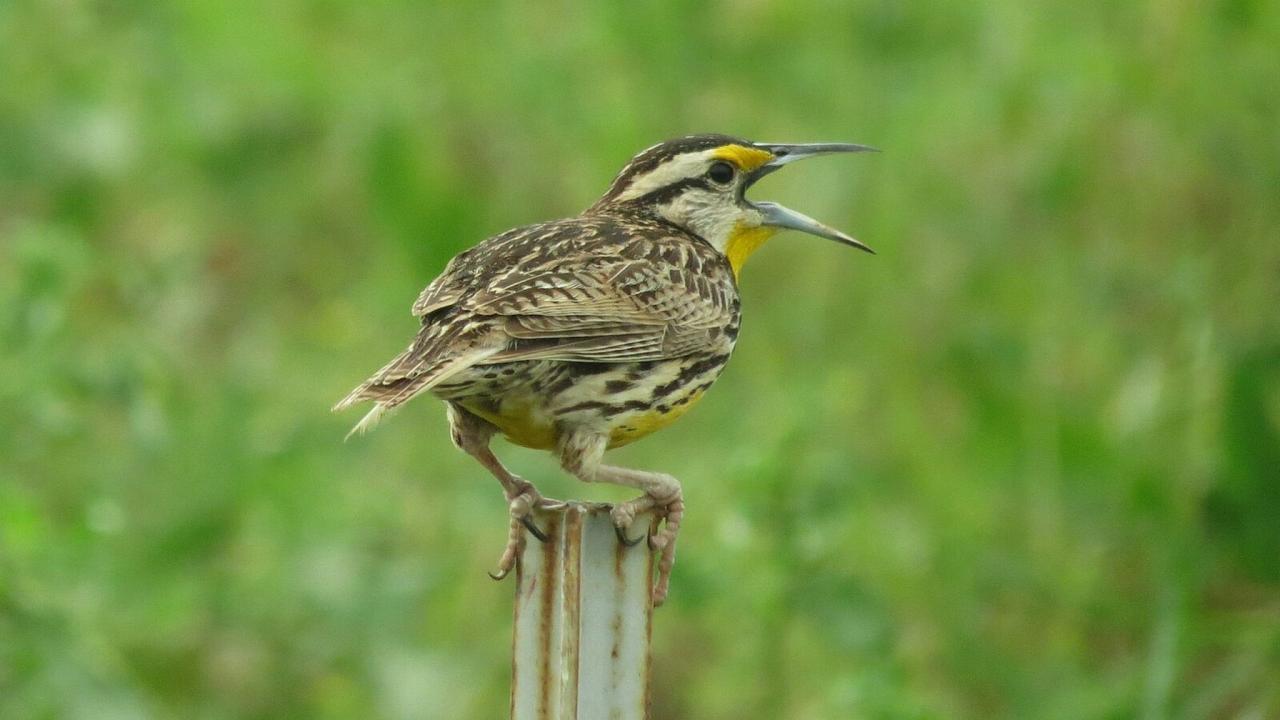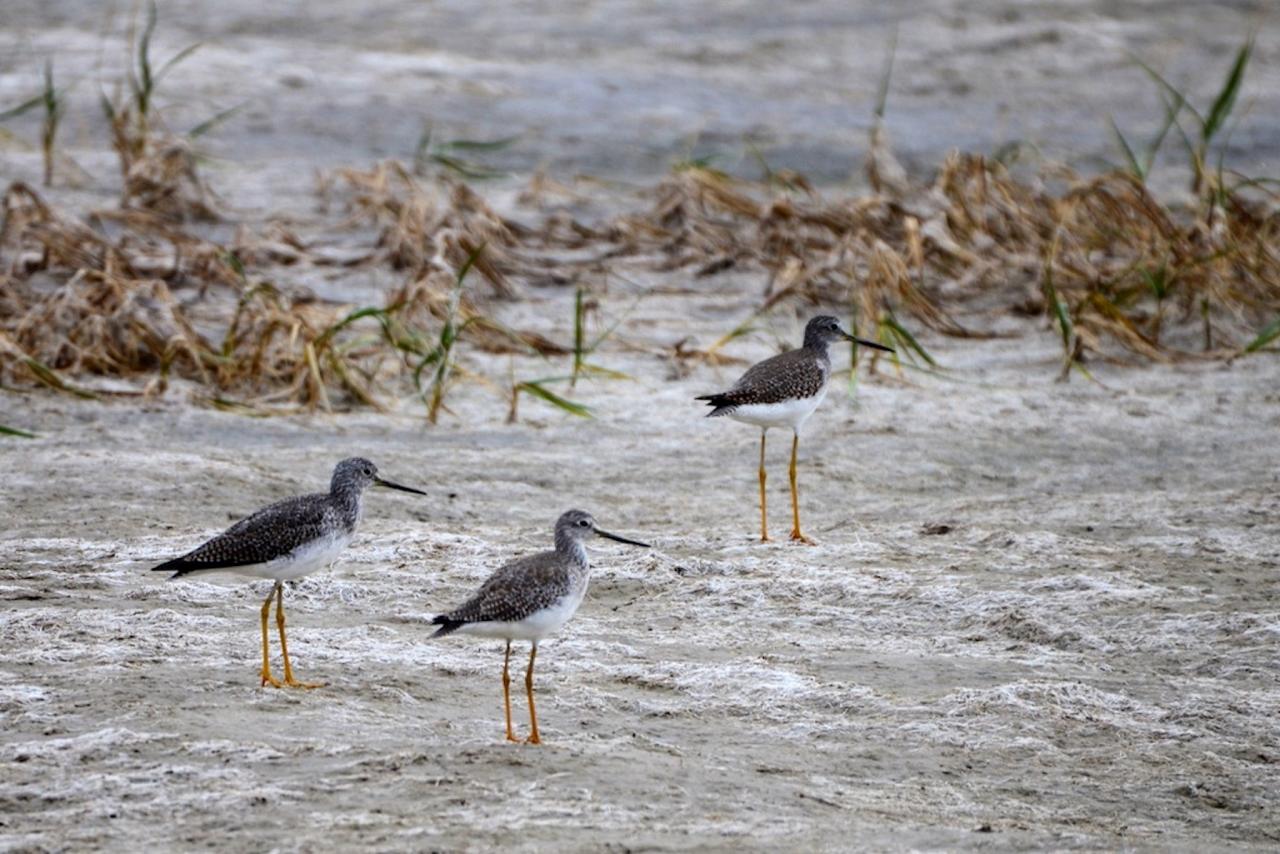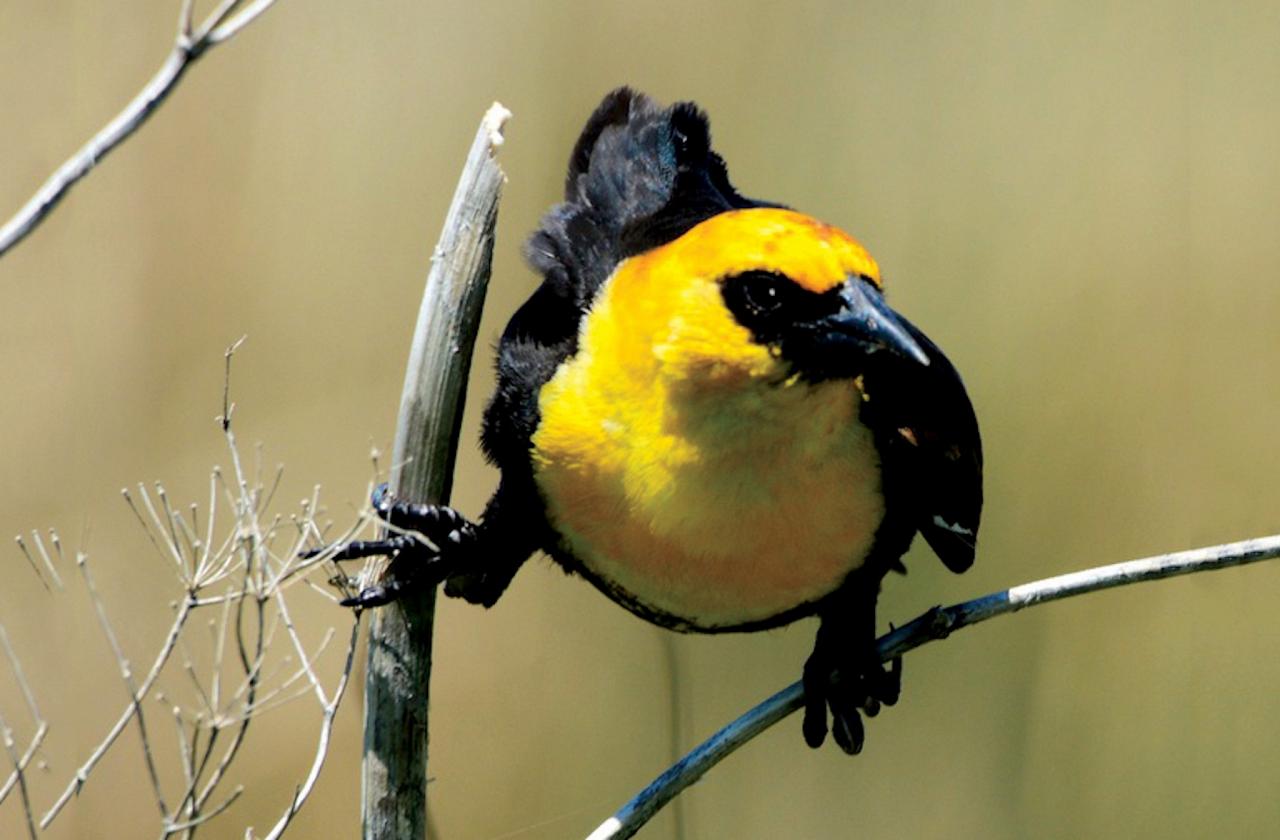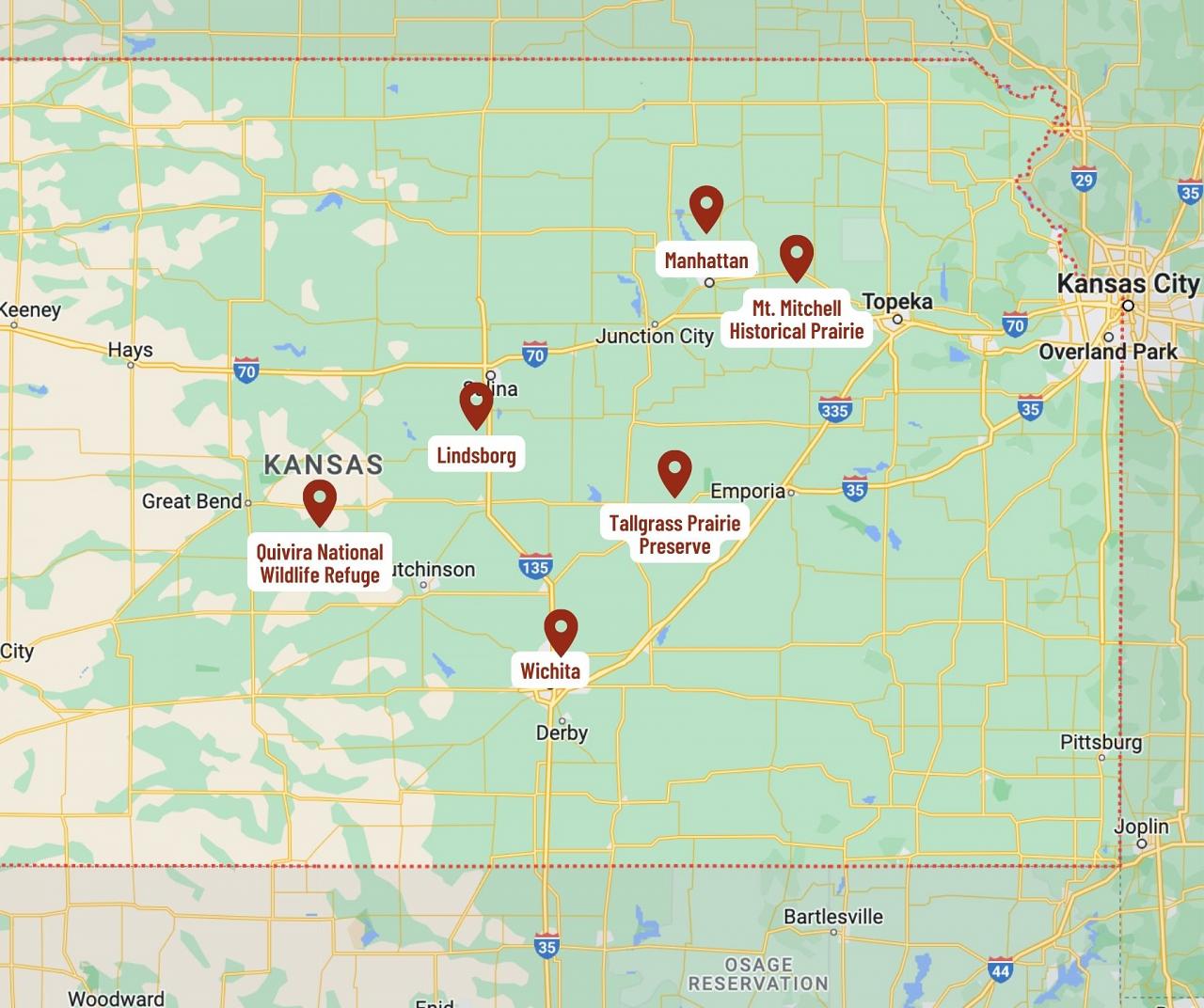- Overview
- Full Itinerary
- Photo Gallery
- Costing
- Travel Details
- Trip Reports
- Guide
- Map
- Know Before You Go
Autumn hues and cooler weather make September an ideal time to experience the natural secrets hidden deep in Kansas’ tallgrass prairies. Witness tens of thousands of acres of prairie that stretch your imagination and inspire your heart. Join Naturalist Journeys on this tallgrass prairie tour to investigate world-class wetlands and grasslands as we explore the amazing prairies of central Kansas and the Flint Hills ecosystem. This is the only remaining area in America with intact, extensive tallgrass prairie landscapes.
September brings fall color and tall, mature grasses decorate the landscape. This is our guides’ favorite time to visit. Discover Big-bluestem, Indiangrass, Switchgrass, and the other tall grasses that blanket these hills, and savor late-blooming wildflowers.
In the Flint Hills, limestone and chert geology defied use of the plow, favoring a grass and ranching agriculture that led to the preservation of large expanses of prairie. This rock foundation also provides a rich cultural and architectural heritage that we discover passing through small heartland towns. From stone fences to elegant homes, barns and courthouses, the native stone solidified history. As our route crisscrosses the Santa Fe Trail, we feel the pull of westward expansion that brought Norwegian, Irish, Swedish, and German settlers to this area.
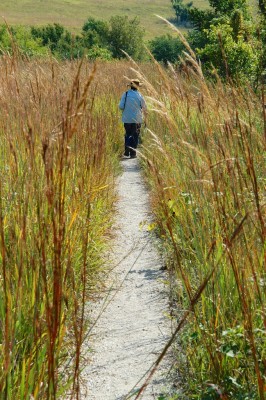
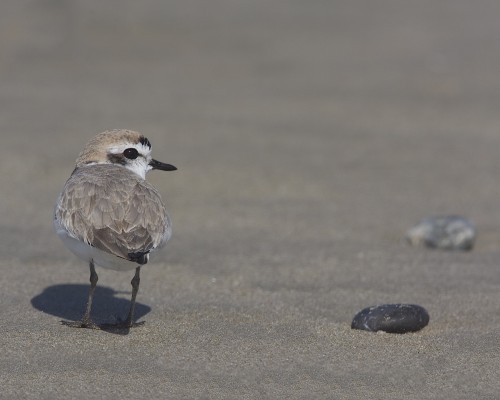
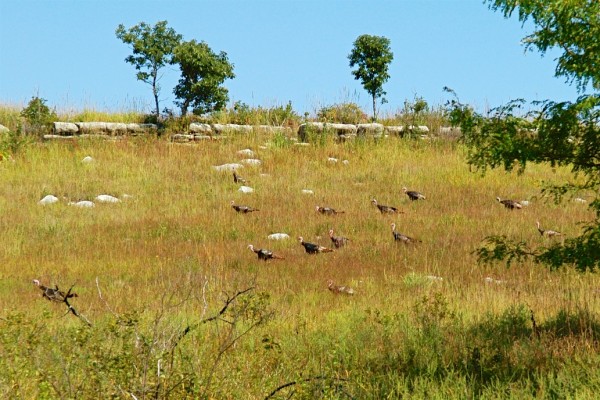
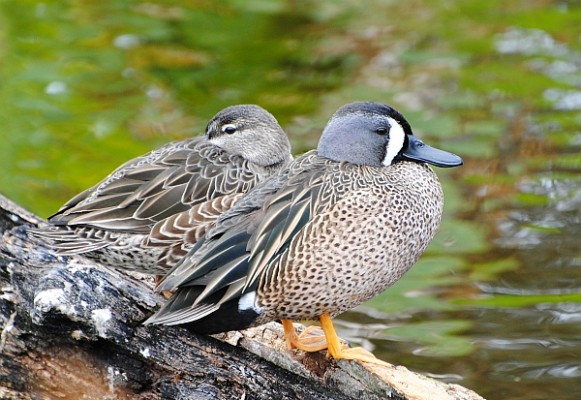
- “I really loved this trip! My only regret is that I hadn't brought two or three of my friends with me! The genius of the trip was mixing so many things together in such an engaging way. I have visited the area once before but this time many more of its riches were revealed.” — Cheryl Miller, 2023 Traveler
- “A trip to the Flint Hills and Tall Grass Prairie of Kansas, exploring the areas of Kansas where the plow has not touched. (One highlight was) watching the American bison herd at Maxwell Wildlife Refuge and learning about these magnificent creatures.” — Brenda Richmond, 2023 Traveler
Tour Highlights
- Experience the grandeur and history of ranching days at the NPS’s Tallgrass Prairie Preserve
- Learn about the latest research on prairie ecosystems at Konza Prairie
- Visit the Maxwell Game Wildlife Refuge for a safe encounter with bison and possibly elk
- Observe raptors, gulls, early migrating waterfowl, shorebirds, and with a bit of luck, American White Pelican by the thousands
- Explore with local guides, Ed and Sil Pembleton, who have their finger on the pulse of the area, and help you get the most out of your visit
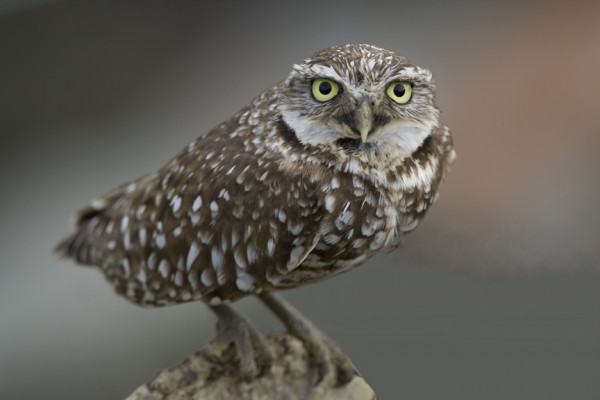
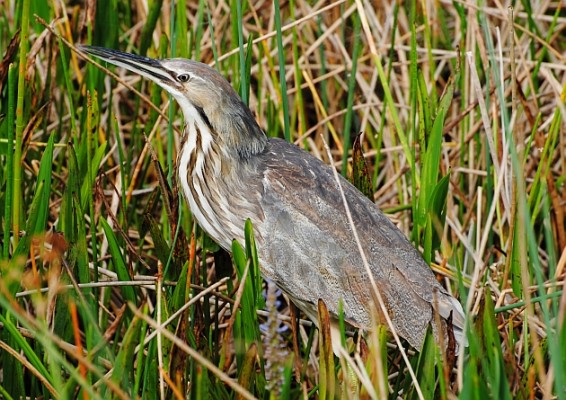
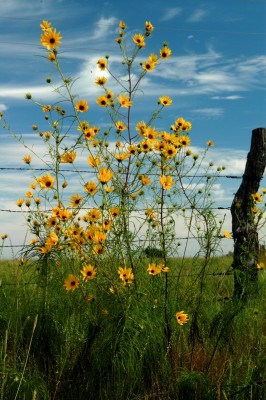
Trip Itinerary
Itineraries are guidelines; variations in itinerary may occur to account for weather, road conditions, closures, etc. and to maximize your experience.
Fri., Sept. 27 Arrival in Wichita, Kansas
Arrive in Wichita, Kansas, today. To ease your travels, we stay tonight at the convenient DoubleTree by Hilton, which has an airport shuttle. Please plan to arrive in time to meet at the hotel at 2:00 PM; if you’d like you can join the guides to visit the Great Plains Nature Center, which provides you with an introduction to the region.
We gather for a welcome dinner and introductions at 6:00 PM at a favorite steak house.
Accommodations at DoubleTree by Hilton (L,D)
Sat., Sept. 28 Dyck Arboretum of the Plains | Quivira National Wildlife Refuge
We depart this morning after breakfast, heading north to Hesston, Kansas, for our first taste of the flora of Kansas at the Dyck Arboretum of the Plains. The beautiful gardens emphasize native grasses, trees, and wildflowers, which are often teaming with moths and butterflies. If we’re lucky, Mississippi Kite still grace the skies before migrating south. We enjoy a hike through the gardens, followed by lunch at a local restaurant.
From the arboretum we head west across the mixed grass prairie and farm grounds to visit Quivira National Wildlife Refuge. Quivira and Cheyenne Bottoms taken together are considered one of the original “8 Wonders of Kansas.” With more than 22,000 acres of prairie and farmland containing both salt and freshwater wetlands, Quivira hosts a wide variety of waterfowl, shore birds, and upland birds. In fact, Quivira’s freshwater, Big, and Little Salt Marshes attract more than 300 of Kansas’ 453 bird species.
We journey back east to the Swedish settlement of Lindsborg for our dinner at the Crown and Rye. We finish the day with sunset at Coronado Heights, where often the calls of Bob White Quail or Greater Prairie Chicken reach us from the surrounding fields.
Accommodations at Dröm Sött, Lindsborg (B,L,D)
Sun., Sept. 29 Lindsborg | Maxwell Wildlife Refuge | Mushroom Rocks State Park
After breakfast, we head east on the Prairie Trail Scenic Byway for our appointment to meet bison up close and personal at Kansas Wildlife and Parks’ Maxwell Wildlife Refuge. Eastern and Western Meadowlarks, Northern Bobwhite, Eastern and Western Kingbirds, and perhaps Scissor-tailed Flycatcher are among our list of prairie and grassland birds we search for here.
The Friends of Maxwell uses a special tram for a guided tour into the bison pasture so that you can safely get a very close and personal view of these magnificent animals. If we are fortunate, the herd of elk may venture out into view. Later we catch an “aerial” view from the tower, give the prairie plants at Maxwell a thorough inspection, and search the adjacent McPherson State Fishing Lake for birds.
After a picnic lunch, we explore the prairie, and the unique geology and history of Mushroom Rocks State Park (another of the “8 Wonders of Kansas). Time permitting we scout Kanopolis Reservoir for Bald Eagle, gulls, and migrating waterfowl.
Accommodations at Dröm Sött, Lindsborg (B,L,D)
Mon., Sept. 30 Lindsborg, The Land Institute | Konza Prairie
After breakfast and checking out of our hotel, we spend some time exploring Lindsborg historic mill and main street. If we are fortunate, we may get to meet National Geographic photographer, Jim Richardson, whose outstanding photographs have graced many National Geographic articles including an April 2007 article on the Flint Hills.
We travel north to The Land Institute, a nonprofit science-based research organization developing ways to advance perennial grain crops in a mixture (polyculture) that protects and builds the soil rather than depleting it. In short, their revolutionary goal is to reform our food production into a sustainable system. Since 1976, their research has developed new perennial grain crops with a goal of building a polyculture cropping system that functions similar to native prairies.
We depart the Land Institute and head into the “Heart” of the Flint Hills, for a hike at the 8,600-acre Konza Prairie Biological Station operated by the Kansas State Division of Biology. Dedicated to long–term research, education, and prairie conservation, Konza is part of the National Science Foundation’s Long Term Ecological Research System and carries out some of North America’s most sophisticated studies of prairie ecology.
Accommodations at Bluemont Hotel, Manhattan (B,L,D)
Tues., Oct. 1 Mt. Mitchell Heritage Prairie | Native Stone Scenic Byway
We turn east along the expansive valley of the Kansas River with a stop to see the historic Beecher Bible and Rifle Church, before exploring Mt. Mitchell Heritage Prairie. Originally protected to honor the role Kansans played in the “underground railroad,” this rather small area contains one of the most diverse prairies found in the Flint Hills.
We proceed south on the Native Stone Scenic Byway, through Alma (“The Native Stone City”) and then across the Flint Hills, where the valleys harbor ranch homesteads with stone buildings, and the pastures and roadsides are graced with amazing historic stone fences.
After lunch, we visit the award-winning Flint Hills Discovery Center, where engrossing hands-on exhibits help us understand the region better. The Center also features a unique immersive experience theater, an exploration of the “underground prairie”, and much more. One past tour participant called the Center “proof that the Flint Hills ecosystem has a fan club.”
Accommodation at Bluemont Hotel, Manhattan (B,L,D)
Wed., Oct. 2 Santa Fe Trail | Native Americans | Tallgrass Prairie Preserve
This is Santa Fe Trail country so filled with the past that today we have a potpourri of natural and historical experiences. Our day begins with birding along a prairie/riparian trail looking for grassland sparrows and Red-headed Woodpecker. The trail is part of the Kaw Nation’s Allegawaho Heritage Memorial Park, where a 35 foot limestone monument stands in honor of the Kanza people who lived here before European settlement. We sample Council Grove’s treasure of historic landmarks including the Kaw Mission and our luncheon restaurant, Hays House, built by Daniel Boone’s nephew.
After lunch, we explore to the National Tallgrass Prairie Preserve. This is the only unit of the National Park System dedicated to the rich natural and cultural history of the tallgrass prairie ecosystem. The historic 1881 limestone ranch house and stone ranch buildings give us a feel for the history. This is a relatively new and still developing park managed by a unique partnership between the NPS and The Nature Conservancy. Bison have been reintroduced to a portion of the area and are usually visible along the trails. At almost 11,000 acres this is a part of the Flint Hills where we experience the sweep of the prairie and the expanse of open skies.
Accommodations at The Grand Central Hotel, Cottonwood Falls (B,L,D)
Thurs., Oct. 3 Cottonwood Falls | Matfield Green Prairie Art Path | Pioneer Bluffs
After breakfast, we explore Cottonwood Falls, the county seat of Chase County, which was the setting for William Least Heat-Moon’s book, PrairyErth. We visit the beautiful county court house, and other main street sights, then we have options to revisit the National Tallgrass Prairie Reserve or search for grassland birds and waterfowl at Chase County State Lake.
After lunch, we visit two sites that offer an interesting and very different lens through which to view the prairie. First stop is the historic Rogler ranch, headquarters for Pioneer Bluffs, an organization dedicated to preserving the ranching heritage of the Flint Hills. Our second is a hike on the Prairy Art Path, designed by architect/artist Bill McBride, to connect people to the prairie through art.
Accommodations at The Grand Central Hotel, Cottonwood Falls (B,L,D)
Fri., Oct. 4 Departures
This morning, we check out and depart for the airport. Please make flight reservation for noon or later. If you are staying on in Wichita, the Doubletree provides a shuttle.
Cost of the Journey
Cost of the journey is $3490 DBL / $4150 SGL, from Wichita, Kansas. Cost includes: all accommodations; all meals as stated in the itinerary; departure group airport transfers; ground transportation; professional guide services; park, preserve, and other activity fees; and miscellaneous program expenses. Tour price does not include: roundtrip airfare to and from Wichita or items of a personal nature such as laundry, porterage, telephone charges, or alcoholic beverages. Gratuities for your guides and others staff are not included and at your discretion.
Travel Details
Please plan to make air travel plans only after the minimum group size has been met. We will send you a confirmation email as soon as the trip has been confirmed.
Arrival & Departure Airport: Wichita Dwight D. Eisenhower National Airport (ICT)
Arrival Information: Please plan flights to arrive by September 27, 2024 before 2:00 PM
Departure Information: Please plan your flight after 12:00 pm on October 4, 2024
Items of Note
PACE: Moderate, with full days of birding and walks on quiet roads and trails. A typical walk is less than two miles and often we have a series of walks at different spots that are a half-mile each, several times a day. DINING: Casual, a mix of local restaurants and both restaurant and picnic lunches.
Browse below for trip reports and species lists from past versions of this and other tours from this destination.
Kansas
Tallgrass Prairie
- April 2012
- April 2013
- September 2014
- September 2019
- September 2021
- September 2023
-
Ryan Klataske

A native Kansan who grew up in the Flint Hills and made annual trips to see the Sandhill Crane migration in Nebraska, Ryan is a cultural anthropologist and ethnographer who is passionate about natural history, wildlife, conservation, and exploration. He earned his PhD in anthropology with a doctoral specialization in environmental science and policy from Michigan State University. Ryan has lived and traveled throughout rural Namibia, studying wildlife conservation, natural resource management, and human-environment interactions. He has also worked for Audubon of Kansas and engaged with conservation efforts in the Great Plains, where his ongoing research focuses on issues of rural life. While teaching at Kansas State University, Ryan helped many students set off on adventures abroad and learn more about the natural world and the need for conservation at home. An avid traveler and photographer, he has vagabonded and worked on farms in Canada and Europe, taught English in China, travelled by bus through Mexico, and explored diverse parts of southern Africa and the United States. He enjoys speaking Spanish and learning Afrikaans, German, and other languages. Ryan lives in the Flint Hills of Kansas, where he loves to hike, birdwatch, explore nature with his two kids, and contribute to the stewardship of his family’s prairie ranchland.
Other trips with Ryan Klataske
-
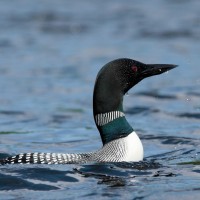 Michigan’s Isle Royale & Keweenaw PeninsulaAugust 20 - 28, 2024
Michigan’s Isle Royale & Keweenaw PeninsulaAugust 20 - 28, 2024
-
Essential Information +
Packing List +
Suggested Reading List +
Useful Links +
Photo credits: Banners: Prairie Photos and Greater Yellowlegs by Ed Pembleton; A Walk in the Grass by Ed Pembleton; Snowy Plover by Greg Smith; WIld Turkeys by Ed Pembleton; Blue-winged Teals by Carlos Sanchez; Burrowing Owl by Greg Smith; American Bittern by Carlos Sanchez; Willow Leaf Sunflower by Ed Pembleton; Indian Grass, Ed Pembleton; Tallgrass Prairie National Preserve, Ed Pembleton; Burrowing Owl, Peg Abbott; Prairie Dog, Ed Pembleton; American Avocet, Carol Rivchun; Snowy Plover, Greg Smith; Barn Owl, Peg Abbott; Coyote, Naturalist Journeys Stock; Scissor-tailed Flycatcher, Terry Peterson; Walking in the Tallgrass, Ed Pembleton; Greater Prairie Chicken, Greg Smith; Indigo Bunting, Doug Pratt; Bison Herd, Ed Pembleton; Bobolink, Steve Wolfe; Great Blue Heron, Sandy Sorkin; Wild Turkeys, Ed Pembleton; American Bittern, Carlos Sanchez; Blue-winged Teal, Delsa Anderl; Burrowing Owl, Greg Smith; Eastern Meadowlark, Terry Peterson; Greater Yellowlegs, Ed Pembleton; Yellow-headed Blackbird, Ed Pembleton.





